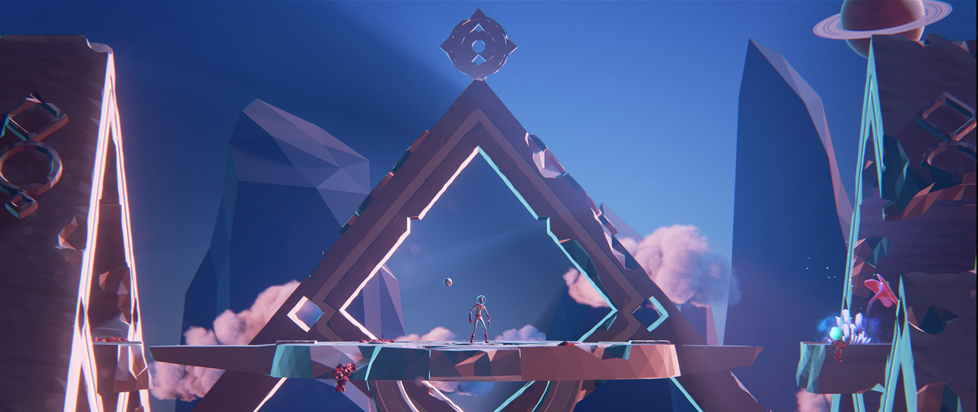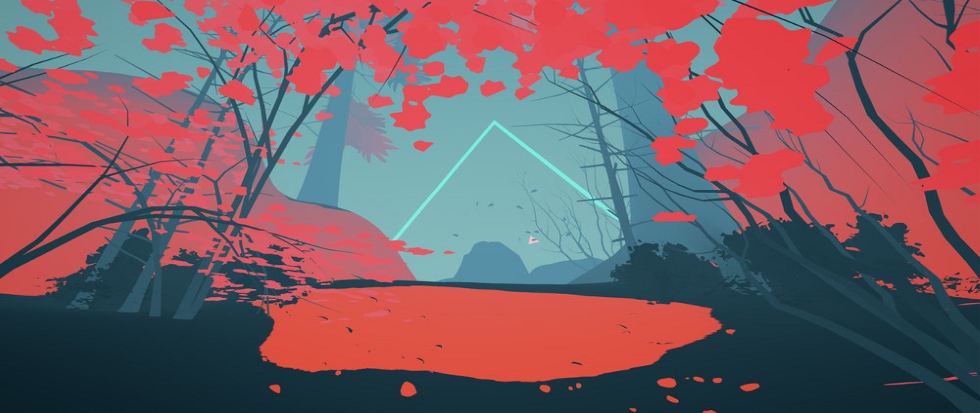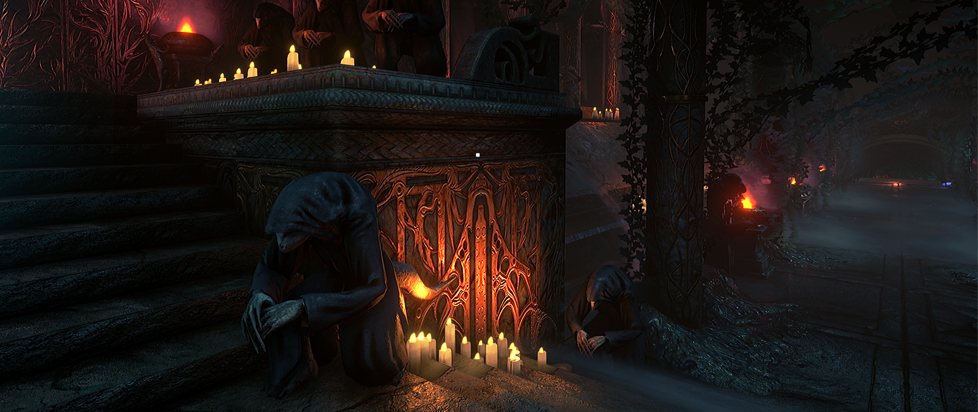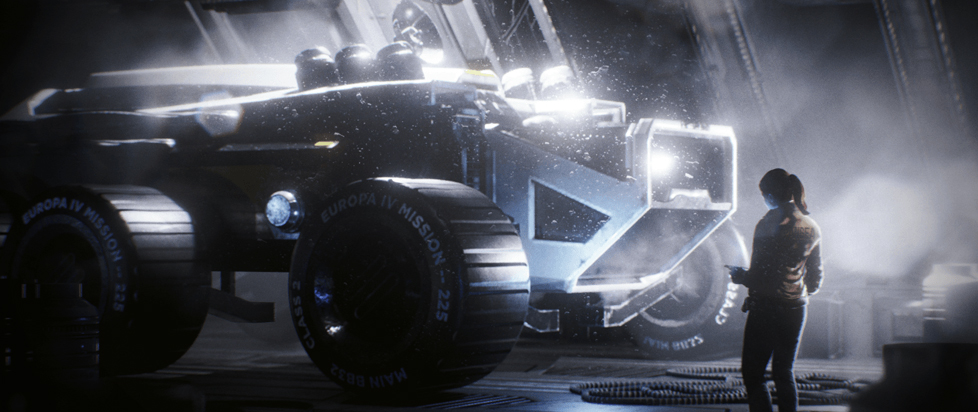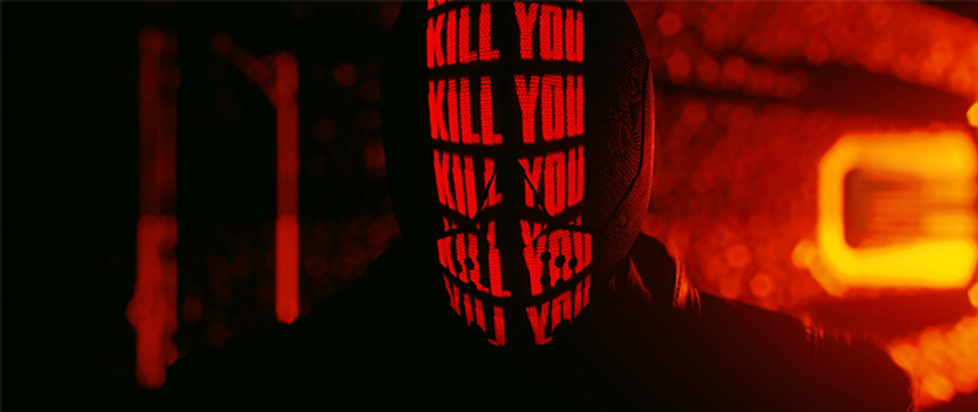
Revving the Engine: Ruiner
 This story is a reprint from Unwinnable Monthly #90. If you like what you see, grab the magazine for less than ten dollars, or subscribe and get all future magazines for half price.
This story is a reprint from Unwinnable Monthly #90. If you like what you see, grab the magazine for less than ten dollars, or subscribe and get all future magazines for half price.
———
This series of articles is made possible through the generous sponsorship of Epic’s Unreal Engine. While Epic puts us in touch with our subjects, they have no input or approval in the final story.
———
Every time I say the word “cyberpunk,” I can feel them bristle.
It isn’t that the term isn’t appropriate. Many of RUINER’s themes – suspicion of mega-corporations selling entertainment with the intent to pacify, digital slavery, the dangers of virtual reality – are fixtures of genre. RUINER’s look is in the ballpark, too: the neon, the trash-filled streets, the subtle influence of futuristic anime styles.
They dislike the word, I think, because I am using it as a catch-all, that people have a checklist of associations with cyberpunk – gritty, dystopia, hackers, weird haircuts, uncomfortable looking vinyl clothes – none of which mean anything on their own and that near-meaninglessness makes the genre easy to dismiss. That it is a word for generic near-future settings. That, for people who grew up after William Gibson coined the phrase in 1984, cyberpunk in many ways represents the past, a kind of retro-futurism that got as much wrong with its predictions about the future as it got right.
You can see it in the game’s trailer. RUINER isn’t cyberpunk, not really, though the same foundation is there. RUINER feasted on cyberpunk’s corpse, digested it, turned it into something familiar but new. Despite the futuristic trappings, the game doesn’t feel like it is about what is to come. If, back in 1984, cyberpunk was about the future, then RUINER is the present.
Reikon Games co-founders Jakub Styli?ski and Magdalena Tomkowicz and creative director Benedykt Szneider were kind enough to chat with Unwinnable about RUINER.
I love the videohead helmet – the way it uses visuals to reflect the emotional state not of the man wearing it but the hacker driving the man is a great idea. How did you come up with this?
Jakub Styli?ski: The first idea for the helmet was to have the masked hero who could be scary.
Magdalena Tomkowicz: We then thought about facial mapping as a thing that can make your face very plastic.
Benedykt Szneider: Now that we had a helmet, we had to do something with it, which was very convenient. The rest of it came from my tumblr, stream which is gifs of snippets from anime and depressing emo quotes.
J. S.: When we started projecting that depressing stuff on the face, it became clear it could be a vessel for the hacker who is communicating with the guy. From that, we got the setup for the trailer. Lately, we’ve been implementing it into the game as well.

Do you have specific inspirations for the game? I see a little bit of Hotline Miami and visual cues to other cyberpunk material. But you tell me?
J. S.: If we started listing, there’d be hundreds of things. We don’t have a goal to make RUINER like any specific game. A lot of people when they see the gameplay they are reminded of Syndicate. They see Crusader mixed with Blade Runner and Hotline Miami. But really, it is a mix of everything we watch and play – we cannot say there’s any particular thing…
The game is a top down shooter and in the movies, I like the fight choreography (like The Raid). When we implement the gameplay, there’s a lot of dashing around, taking weapons from your enemies, jumping, teleporting behind your enemies backs. This isn’t new, but there is something cool about that –
M. T.: We are filled with references in our subconscious, accumulated throughout our lives by interacting with culture. I think it is the kind of feel that you get. When Hotline Miami came out – the energy! These things give us different impressions – somehow they are disturbing, somehow they are exciting, somehow you get a rush, somehow you get reflective. In Hotline Miami, the specific situation and the colors and this whole package together was like an endless, violent, drug-filled party.
Our inspiration is really to acquire that kind of strong feeling and convey it to the players.
How do you balance the needs of story against what seems like frenetic action of the gameplay? What’s makes a great game story for you?
M. T.: I think games are at the very beginning of exploring the narrative tools that the medium has to offer. My favorite example is the first Kane & Lynch. When I played in co-op, I played Lynch, who is a psychopath, and at one point I come out of a place and I see there are policemen everywhere, so I start shooting. My friend next to me says, “What are you doing, why are you shooting at those people?” And I say, “What do you mean, they are the police!” “No, they are not the police.” I look at his screen and I see civilians.
A lot of people focus on the gameplay part then the narrative part. To me, I think it is important to not make the distinction, to make it so that the game tells itself.
B. S.: Games like Homefront: The Revolution and some Ubisoft games are very pushy in their narratives. We need to listen to the gameplay and fit the story elements into that, so they don’t mess with you, so you flow with the game.
M. T.: There is often this question of compromise, like you have to sacrifice gameplay for story or story for gameplay and we have to push and squeeze them together somehow to make a game. For us, a game is a game – all of its aspects should click together. There is no compromise, only creative communication and solutions. If the environment changes, then the gameplay and the story change because they are all so closely tied together.
The story is supposed to feel right. It is less about hitting specific narrative points than it is making the player feel something.
J. S.: Flow.
B. S.: We are a very small team so we have some limitations and they require us to invent. We don’t have to make weird cutscenes that other indie games are trying to do – and we know they are doing it wrong – so we just skip those.
J. S.: There are quite a few indie games made with limited resources that try to create a story with flashy hooks for articles, but I think, personally, they don’t think about how it flows when you play the game. The game is very boring until one point where there is a cool twist and that’s it.
M. T.: We had this conversation with would-be partners. They ask, “What’s your hook? What’s your selling point?” We don’t have such a thing. We are just want to make a good game. “So this is about craftsmanship,” they’d say. Which is missing the point, too, because there’s no such distinction when you’re creating something. They are just words.
It might be convenient to use concepts like “hook” or “craftsmanship” in abstraction when you don’t have the vision, or in marketing, or in hindsight when you analyze a game, but when you create something and you know what you want to make, the other person ideally either wants to understand it for what it is or simply trusts trust you.
It has to feel right.

When RUINER is out and in people’s hands, what do you hope to accomplish with it? What makes it a success for you as developers?
J. S.: Most people don’t finish playing their games. When Portal came out, a well-crafted game, maybe 20% of players finished the game, which is about five hours long and has one of the highest review scores ever.
I want the players to feel they spent their money right. I want them to play the game for some time. I want them to sweat a lot and curse a lot, but I don’t want them to feel the game is unfair. I want them to forget about their surrounding for some short moment. And when they stop playing the game to have at least one really strong memory.
I play a lot of games but I have cool memories from maybe 5% of them. Most games I finish are pretty cool and I had some fun but I don’t really remember any specific situation.
B. S.: We want to imprint, to stamp it on the player’s head.
J. S.: To have something worth remembering. One of the games that imprinted in my brain the most in the past decade is Dark Souls. It was one of the only games while playing I was actually sweaty and excited, fighting skeletons underground in the dark, being respawned by necromancers. This is one of the greatest experiences of my gaming life. The only thing that rivals it are firsts, my first Syndicate, my first Eye of the Beholder. If we achieve with one scene in the game something comparable to thirty seconds of this experience, then that will be an achievement.
You’ve expressed hesitation at the term cyberpunk – can you elaborate on that?
B. S.: In the beginning, we didn’t want to use the word because it is so common to our generation that I think it is something you take for granted at this point. We grew up on it the same way our parents grew up on –
M. T.: Elvis Presley?
J. S.: Our smart phones are more cyberpunk than a lot of cyberpunk.
M. T.: We didn’t want to make a cyberpunk game but the ideas that were most intriguing to us, that triggered the strongest response, had something to do with the development of technology and the human condition at this point. I did a lot of research into slavery around the world and learned about things no one talks about because everyone is excited about the technology. At the same time, humanity is still in a deep hole. We still have big problems with being human.
There are many topics we are exploring in the game, but not explicitly. This is in the background, this is the noise from which the characters came out. We explore it through their eyes.
We don’t want to predict the future. All predictions come from the past. We’re improvising on the themes that are vibrant at the moment to us: virtual reality, slavery, human trafficking, citizen management systems, the relationship between corporations and people. Cyberpunk comes from Gibson’s impressions of the world at that time, so it is the present, but it is also very retro.
B. S.: Humanity will not change. In a hundred years’ time, we’ll still be using one another.

Are there any particular benefits to developing RUINER in Unreal?
M. T.: Sequencer [a tool for creating in-engine cutscenes] is really awesome. It is a very new tool. We were waiting for it with our fingers crossed and it came out and is amazing. It is overwhelming that such a new thing is already so powerful.
J. S.: The other thing is Blueprints. We have only one programmer. We have people who can script, who can understand coding, but aren’t coders. But all of us are working in Blueprints. This is a really cool feature.
B. S.: I can add an inch of salt to this ridiculous praise. I don’t come from games and I wasn’t used to working on game engines. They are very accessible from the point of having a world in 3D that is dynamically lit and all. They are great to work on, but coming from animation and post-production environments, I was shocked that a year ago there was no Sequencer.
Nevertheless, it is impressive and good timing for us. It is a real step up from Matinee, or hiring an outside company to do a trailer for you.
How did the Unreal Dev Grant affect RUINER?
J. S.: We were able to buy additional computers and get some interns, people studying at Warsaw game dev school.
M. T.: We also bought a big ass TV.
J. S.: Which is actually a critical component in the game’s development. No, really, we have 15 people in one room and we have pretty good communication, but until we play the game and look at it all together, we can’t talk about the environments and the gameplay. That is impossible to do gathering around one computer. One big TV allows us to look at our game, real hard.
B. S.: Something does not exist until it is in the game.
J. S.: Iteration is our favorite word.
B. S.: The big TV is crucial. RUINER is not a game with a sharp plan –
J. S.: Our approach to the game development is pretty stupid –
B. S.: Extravagant
J. S.: We are not doing it the smart way. It is something we took from CD Projekt, a way of iterating until it is really good and taking as few shortcuts as you can. It is stupid as a small indie company with 18 people and very limited in what we can do, but we still just try to iterate and polish everything as much as we can. It is a lot of work, but I think people see it. People see the trailer and gifs and detail –
M. T.: The love.

